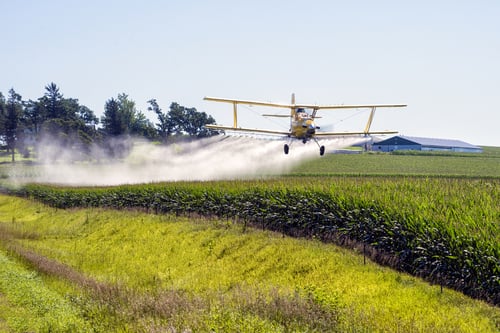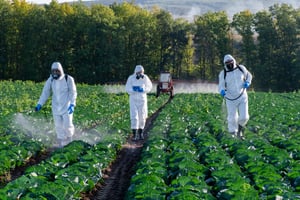Even though a pesticide has been in wide use, it may not be free of extremely negative downsides....
Monitoring for Organochlorine Insecticides in Water
Organochlorine pesticides are synthetic compounds that were historically used in agriculture to control insects in a variety of types of crops. Unfortunately, these compounds were found to be persistent organic pollutants that are now known for robust chemical stability. Some examples of pesticides in this group are DDT (CAS 50-29-3), Chlordane (CAS 12789-03-6) and Heptachlor epoxide (Isomer B) (CAS 1024-57-3). Organochlorine pesticides have now been connected to human and animal cancer, nervous system damage, immune system disruption and reproductive disorders. Because of the toxicity of this group of pesticides, they have been widely banned around the world (1).

With the dramatic reduction in new use of organochlorine pesticides, full attention is turned to the ongoing monitoring and analysis of this group. Organochlorine pesticides persist in soil or sediment due to their chemical stability, which in turn, results in their presence in water, greatly affecting quality for drinking water, ground water, surface waters and waste waters. Pesticide pollution of surface and ground water threatens the integrity of the aquatic environment, with effects such as acute and chronic toxicity in aquatic organisms and loss of habitats and biodiversity. As a result, many government agencies around the world outline the specific compounds to monitor and detail how to analyze them. For example, Directive 2013/39/EU includes several organochlorine pesticides on its list of priority substances in the field of water policy (2). The EPA (US) has also published several protocols for measuring organochlorine pesticides in environmental matrices, including (3):
- Method 508.1: Determination of twenty-nine chlorinated pesticides and other compounds in drinking water, ground water, and drinking water in any treatment stage using liquid-solid extraction and electron capture gas chromatography.
- Methods 608.1: Determination of organochlorine pesticides in industrial and municipal wastewater by gas chromatography with measurement by an electron capture detector.
- Method 608.2: Determination of organochlorine pesticides in industrial and municipal wastewater by extraction, analysis by gas chromatography, and measurement by an electron capture detector
- Method 608.3: Determination of organochlorine pesticides in industrial discharges and other environmental samples by gas chromatography (GC)
- Method 8080A: Determination of organochlorine pesticides by gas chromatography
In addition to EPA methods, ISO 6468 outlines a protocol for determining certain organochlorine insecticides in numerous types of water.
When monitoring for organochlorine pesticides, there can be no shortcuts. The reference materials used in the analysis must be exact, and the resulting analysis must deliver the most accurate data. Analyichem Group offers a full range of reference materials for the testing and monitoring of organochlorine pesticides according to government specified standards.
Visit our online store or request a quote from our team
Organochlorine pesticides are one class of pesticides under close monitoring. Another class of concern is Organophosphate Pesticides. Learn more about monitoring organophosphate pesticides in our next blog.
References

.png?width=50&name=MicrosoftTeams-image%20(1).png)




